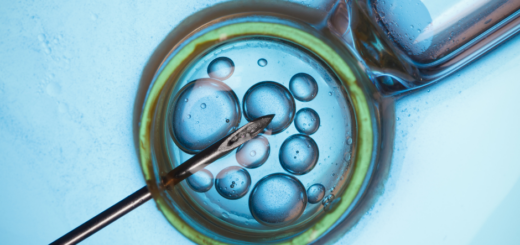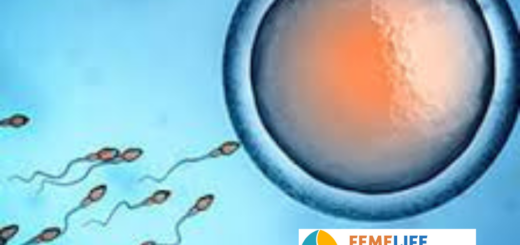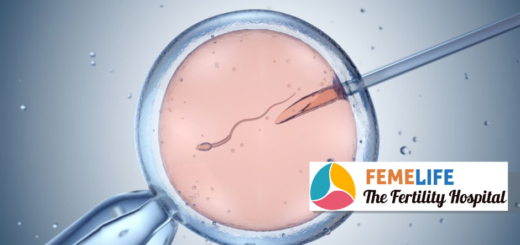Thin Endometrium – Successful Pregnancy with Thin Uterine Lining
Endometrium is the inner lining of uterus which holds the embryo for implantation. Successful pregnancy can not happen with thin endometrium. Pregnancy chances are low if the endometrium is below 8mm in most cases. You may be wandering about the definition of thin endometrium. Generally, if your endometrium is less than 7 mm it is underdeveloped. In such cases your fertility specialist may advise for cancellation of your embryo transfer.
What is the role of endometrium in fertility?
How endometrium develops?
Endometrium is one of the main factors in pregnancy. Growing endometrial thickness is measured in infertile women to know the possibility of pregnancy. Women having regular menstrual cycle usually have three phases of endometrium growth. First, immediately after menstrual blood loss the endometrium tries building up. This is the growing (proliferative) phase which last about 14-18 days. This phase coincides your follicular growth and ovulation. At ovulation as the egg is released endometrium also changes its pattern to secretary under the influence of hormones. This change is essential for embryo implantation. At times, during IVF treatment this change is delayed resulting in failure of implantation. Hence your doctor may advise for a frozen embryo transfer in subsequent cycle. So, secretary changes are preparation for pregnancy and this phase lasts typically for 14 days. If pregnancy doesn’t happen then comes the bleeding phase called menstruation. All these changes in endometrium are controlled by female fertility hormones like estrogen and progesterone.
What is normal endometrial thickness?
Not all will develop endometrium up to expectation. In some cycles endometrium doesn’t develop even under normal conditions. You can have thick or thin endometrium depending on hormone levels. Usually endometrium growing beyond 8 mm is called receptive for embryo. Some women may conceive with 7mm endometrium also but their percentage is low. Women conceiving with thinner endometrium may lose pregnancy in earlier weeks or go for complications in pregnancy. The normal range of endometrium for pregnancy is 8- 14mm.
Endometrium Measurement
Usually endometrium is measured by ultrasound. Endometrial measurement may not be accurate in uterine fibroids, adenomyosis, polyps. Uterine orientation like retroverted position may not show the correct thickness or pattern. Previous surgeries, uterine contractions also can modify the measurements. Ultrasound machine quality, inter observer and intra-observer variability and patient intolerance are also some of the reasons for variation in measurement.
How endometrial thickness is monitored?
Ultrasound measurement
Ultrasound measurement – The most commonly used method is ultrasound of endometrium. Ultrasound is the ideal harmless tool to evaluate the endometrium. Ultrasound measures thickness of endometrium of endometrium and pattern. Triple line pattern is seen during development of endometrial thickness. At times your doctor may discuss about absence of trilaminar pattern. If you have a backward positioned uterus (retroverted uterus) triple line may not show in ultrasound.
Doppler test
Doppler test- This is another special test done through ultrasound. Doppler measures endometrial blood flow. Your endometrium is directly related to blood flowing to endometrium.
Hysteroscopy
Hysteroscopy – By hysteroscopy your doctor can see the endometrium and find out any defects. But hysteroscopy cannot be done repeatedly because it requires anesthesia.
Hormone Test
Hormone Test– Repeated hormone tests like estradiol can indicate growth of endometrium. Estrogen levels correlate with thickness of endometrium. Progesterone levels can indicate receptivity of endometrium.
CT scan
CT scan – Endometrial volume can be measured by 3D/ 4D CT scan or MRI. Volume measurement is directly related to endometrial thickness.
Thin endometrium in IUI vs IVF pregnancy?
In IVF treatments, a thin endometrium is associated with lower pregnancy rates. However, if you are under In IUI treatment pregnancy rate may not change. The reason for the reduced pregnancy rates in patients undergoing gonadotrophin-stimulated IVF therapies is not clear. It may be due to higher oxygen concentrations with a thin endometrium. This might be harmful for embryo implantation. Thin endometrium may be hereditary which doesn’t affect fertility. Thin endometrium is a fertility reducing factor but may not cause infertility as such. Receptive endometrium is an essential part of embryo implantation process.
Management of thin endometrium
How to manage thin endometrium? Endometrial thickness less than 7 mm on ultrasound is generally considered sub-optimal for embryo transfer. Hence your IVF treatment may not give you success if you have thin lining of uterus. Your fertility specialist may try several treatment modalities to develop endometrium. It includes –
- Hormone therapies
- Blood thinning agents
- Agents improving blood supply
- Growth factors
- Antioxidants
- Platelet rich plasma
- Neuromuscular electrical stimulation
- Stem cell therapy
Hormone therapy
The best method for developing endometrium thickness is oral or vaginal estrogen hormone therapy. Oral estrogen are also used for endometrium preparation in frozen embryo transfer. HCG injection is also used for development of endometrium at times.
Blood thinning agents
Low dose aspirin, low molecular weight heparin are used to improve endometrial thickness, pattern, and endometrial blood flow. Sildenafil citrate administration can cause improvement combination with estrogen.
Agents improving blood supply
Vasodilators like pentoxiphylline and nitroglycerine are also used by some doctors for improving endometrial thickness. Vitamin E is an antioxidant and also improves blood supply and thickens endometrium.
Growth factors
Growth factors like G-CSF can improve endometrial thickness and clinical pregnancy rate of the infertile women with thin endometrium. This can be directly infused into uterus
Platelet-rich plasma (PRP)
PRP is blood plasma prepared from fresh whole blood that has been supplemented with platelets. Endometrial growth and pregnancy occur in many patients after PRP infusion.
Advanced therapies for thin endometrium
Neuromuscular electrical stimulation (NMES) and Stem cell therapy are some of the advanced therapy for endometrial development. Assessment of the endometrium is an essential component in assisted reproduction. Endometrial thickness has been identified as a prognostic factor for success in assisted reproduction. Uterine perfusion with G-CSF represents a promising new tool for the currently mostly intractable problem of inadequate, thin endometrium.
What is Endometrial Array (ERA)?
The endometrial receptivity array (ERA) is a molecular test of endometrium. The test checks genetic information and categorizes endometrium as receptive or non-receptive. Women having repeated implantation failure can go for this investigation.
What are the factors causing thin endometrium?
Certain situations don’t allow endometrial growth. If you are facing difficulty in endometrial growth your doctor will do certain tests to find out the cause. Infection can lead to the destruction of the basal layer of the endometrium. Tuberculosis is now a day rare but if it affects endometrium doesn’t allow to grow. Some women may have thin endometrium after cleaning of uterus (D&C) or miscarriage. At times women are born with small uterus and thin endometrium. Women who have attained menopause but wishing for a pregnancy with donor egg also may face difficulty in growing endometrium. Some women have high blood pressure and this results in thick blood vessels. In these cases, endometrium doesn’t develop due to lack of blood supply to uterus. Exposure of uterus to radiation during cancer treatment could be another reason. Surgical procedures such as repeated curettage, polypectomy or myomectomy. Drug usage such as clomiphene citrate also can cause thin endometrium.
How thin endometrium affects implantation?
Patients having thin endometrium have increased oxygen concentration in the basal layer. High oxygen concentration damages endometrium. A thin endometrium is seen more often in older women probably because of decreased blood flow. Low blodd supply doesn’t allow implantation by harming development of certain molecules.
Can I get pregnant with thin endometrium?
Some of the scientific studies have not found any relation between thickness of endometrium and successful pregnancy. But majority are in the view that thin endometrium is associated with lower pregnancy rate. Hence your doctor will check the thickness of endometrium and provide medications to develop it.
Now comes the million-dollar question, “How to thicken endometrium?” Till now scientists have failed to identify a definitive technique to thicken endometrium. There are medications like estrogen tablets, gel which are used in common to thicken endometrium. Others like blood thinning agents, steroids, hormone injections are tried with variable success. Newly evolved methods like platelet derived protein is being extensively used but, results are yet to be verified. Some of the agents like sildenafil G-CSF are in use but no definite result is concluded.
What is PRP (platelet rich plasma)?
PRP is a new approach used for the treatment of thin endometrium. If you have problem in growing endometrium your fertility specialist may suggest PRP infusion. The doctor will take 5ml of blood from your vein and prepare it. Usually it takes 30mins for this process. Then the processed blood is injected into your uterus. This derived protein from blood helps the endometrium to grow because it is rich in growth factors. Since this is taken from patients own body it doesn’t cause any reactions or allergy.
Can thin endometrium cause miscarriage?
You must know the mechanism of pregnancy before I answer the question. Endometrium forms a bed for the rolling embryo in the uterus. Now embryo chooses the place for implantation based on the quality of endometrium. Here doesn’t end the responsibility, endometrium has to supply food for growing embryo till three months. After pregnancy happens immediately endometrium changes its structure. It grows to bring in more tissue, blood vessels so that can hold the growing fetus firmly. Thin endometrium doesn’t possess the quality of receiving embryo, so pregnancy may not happen at all. At times if pregnancy succeeds thin endometrium cannot hold it for long. So, the pregnancy ends in miscarriage.





















5 Responses
[…] Thin Endometrium […]
[…] Thin Endometrium […]
[…] Thin Endometrium […]
[…] Thin Endometrium […]
[…] Thin Endometrium […]